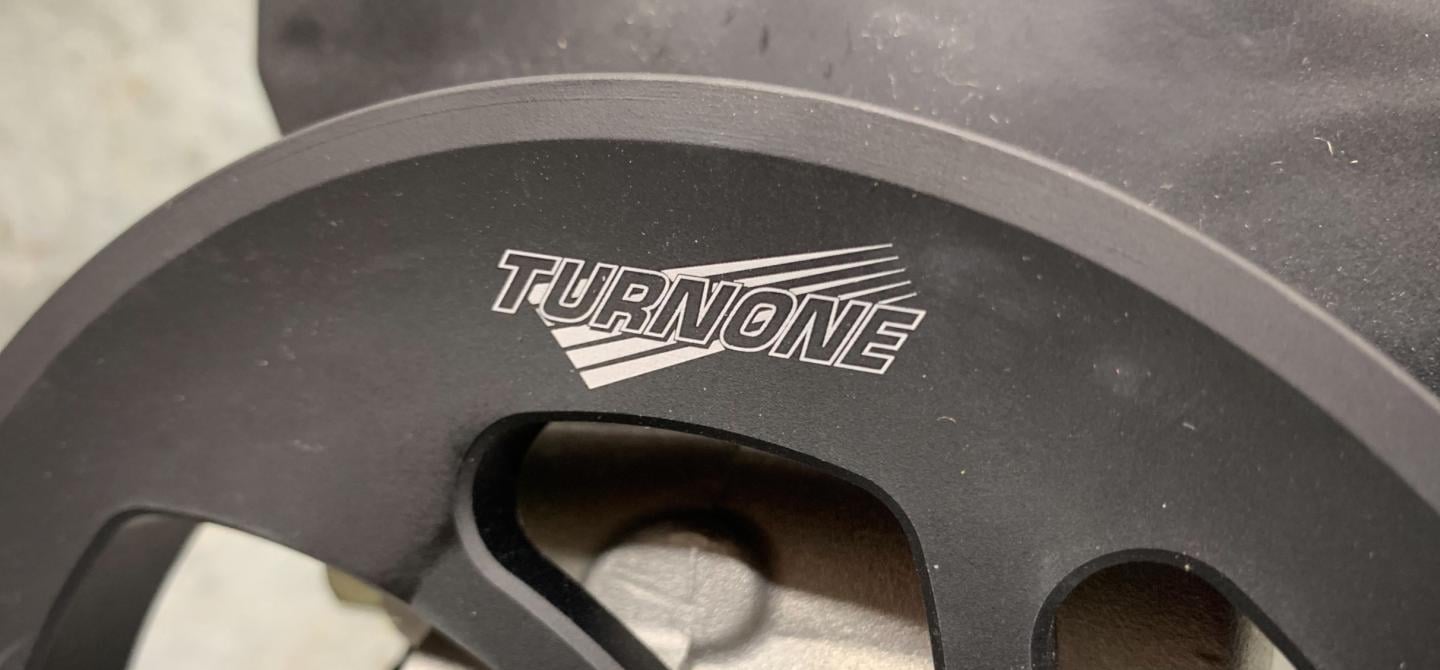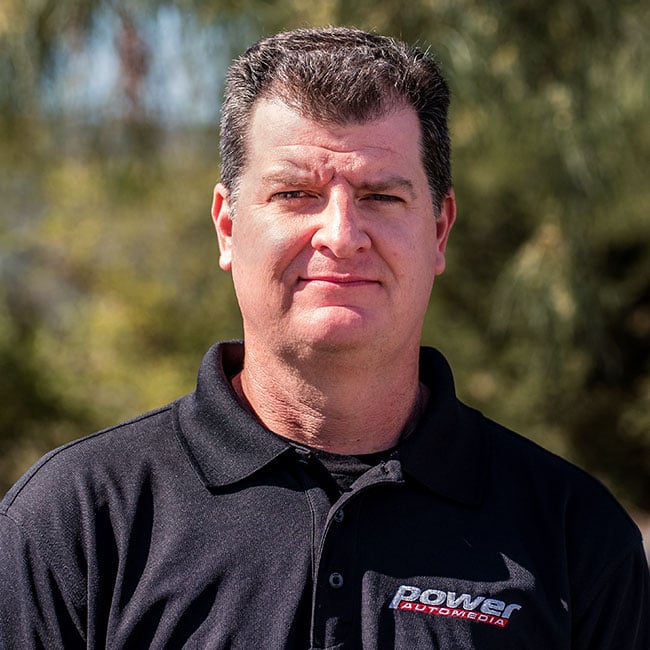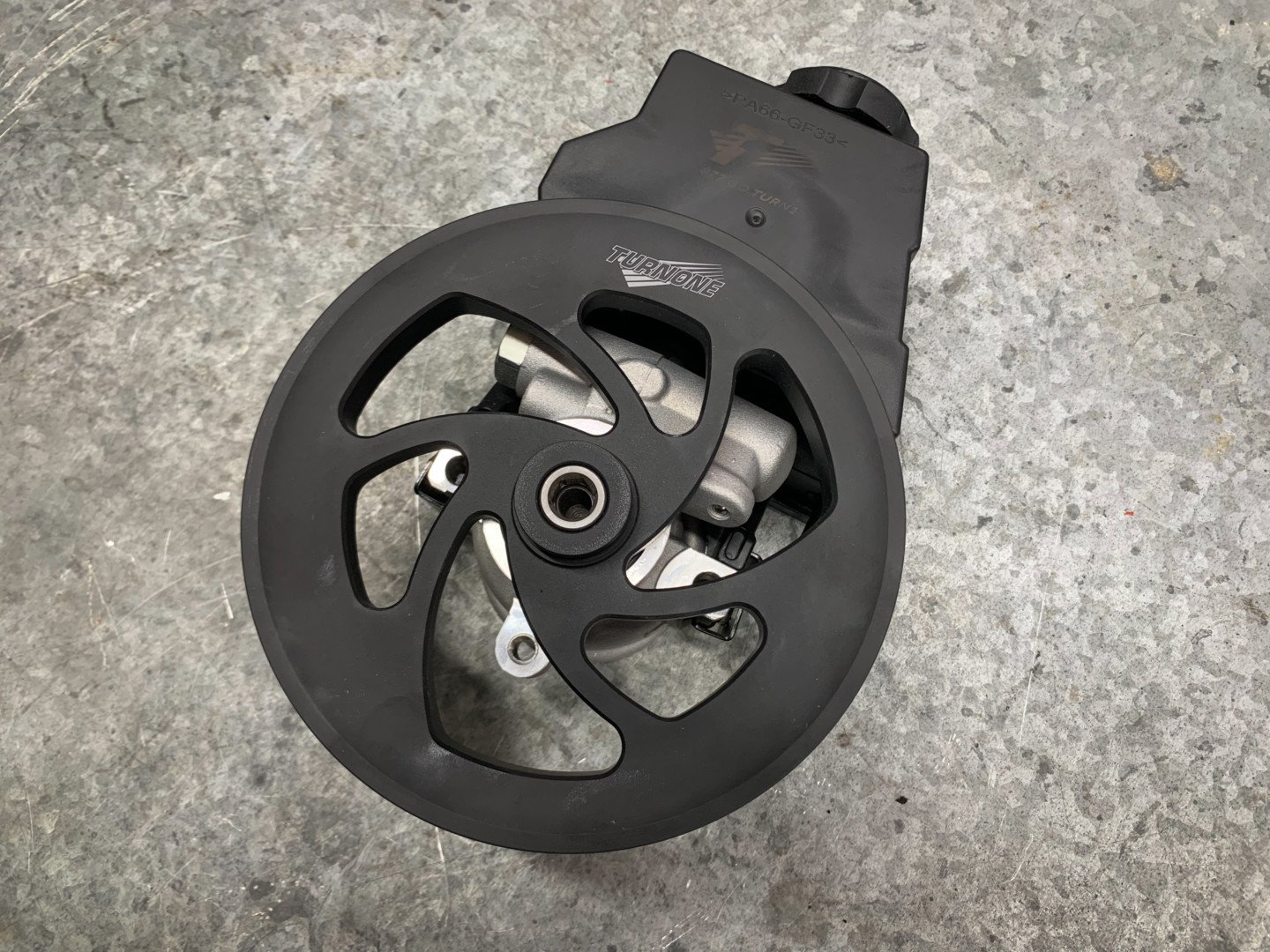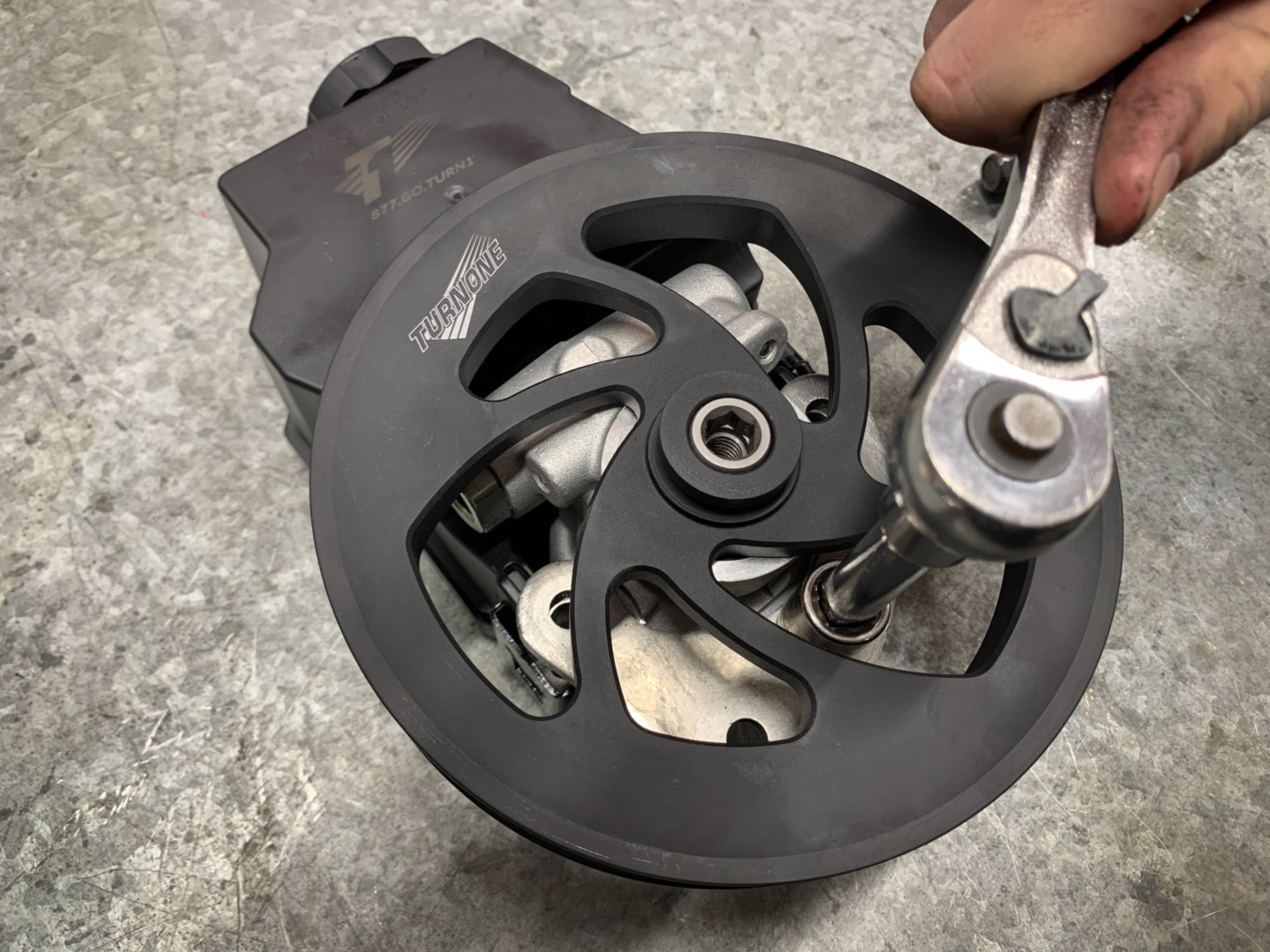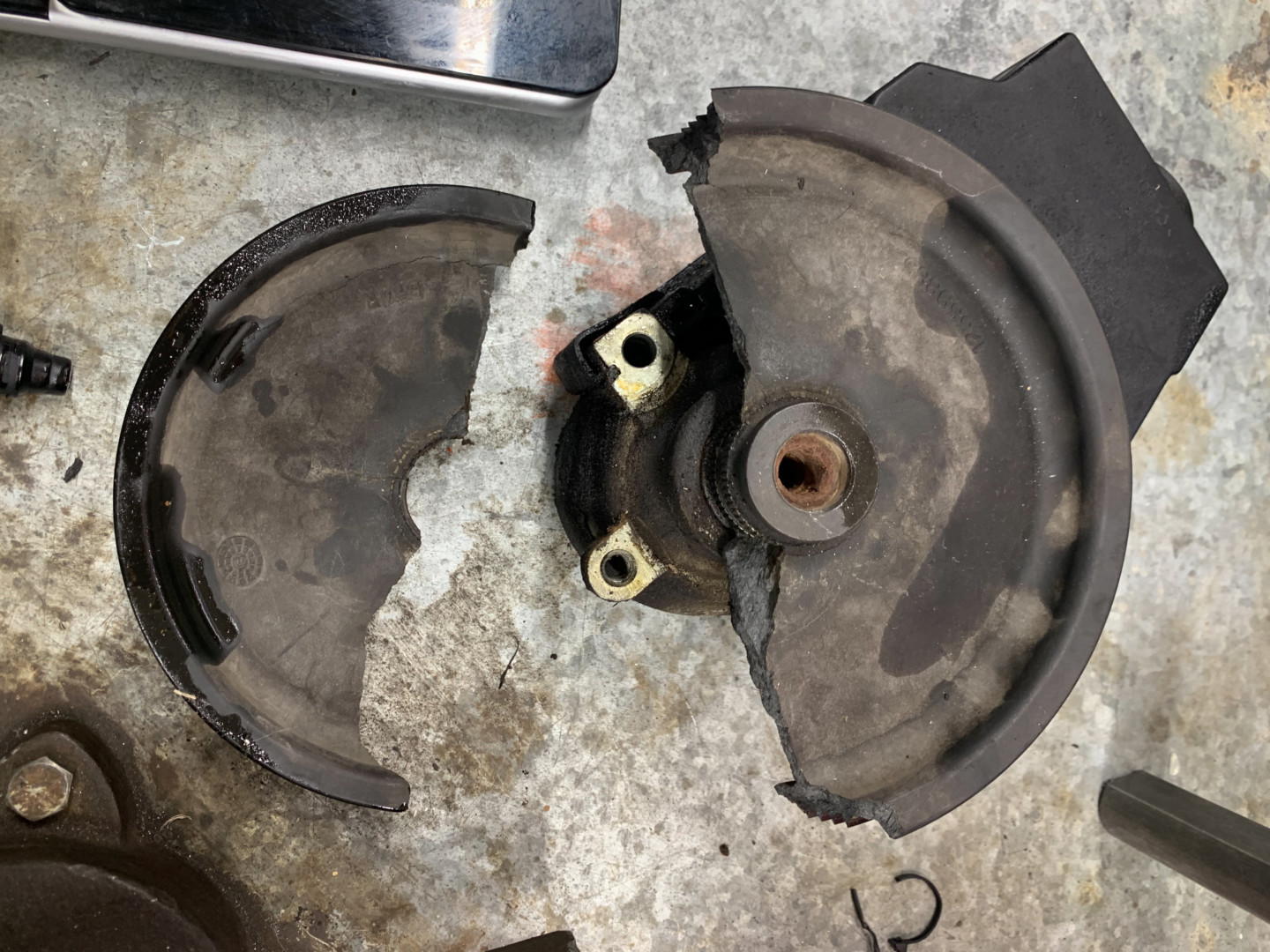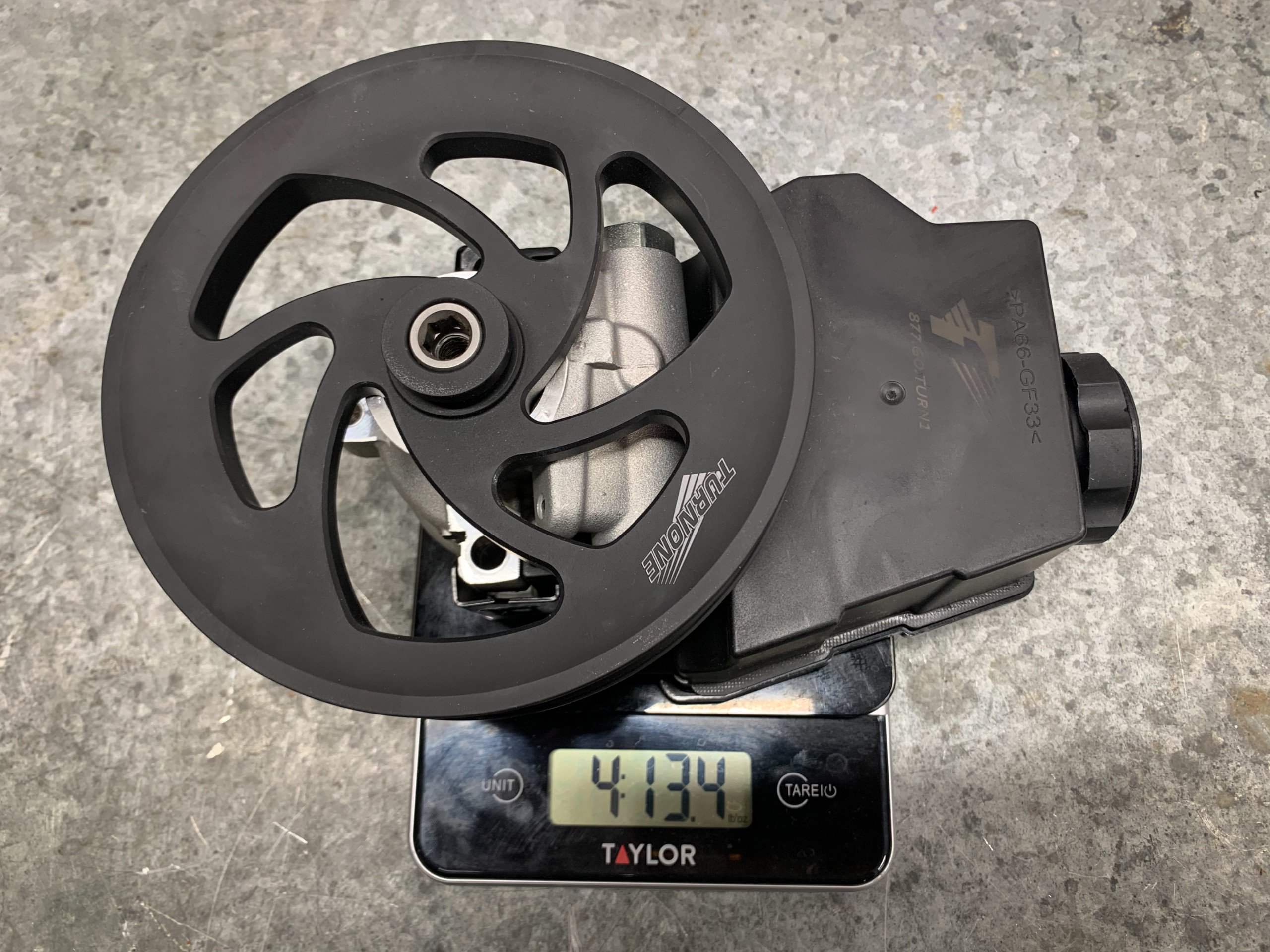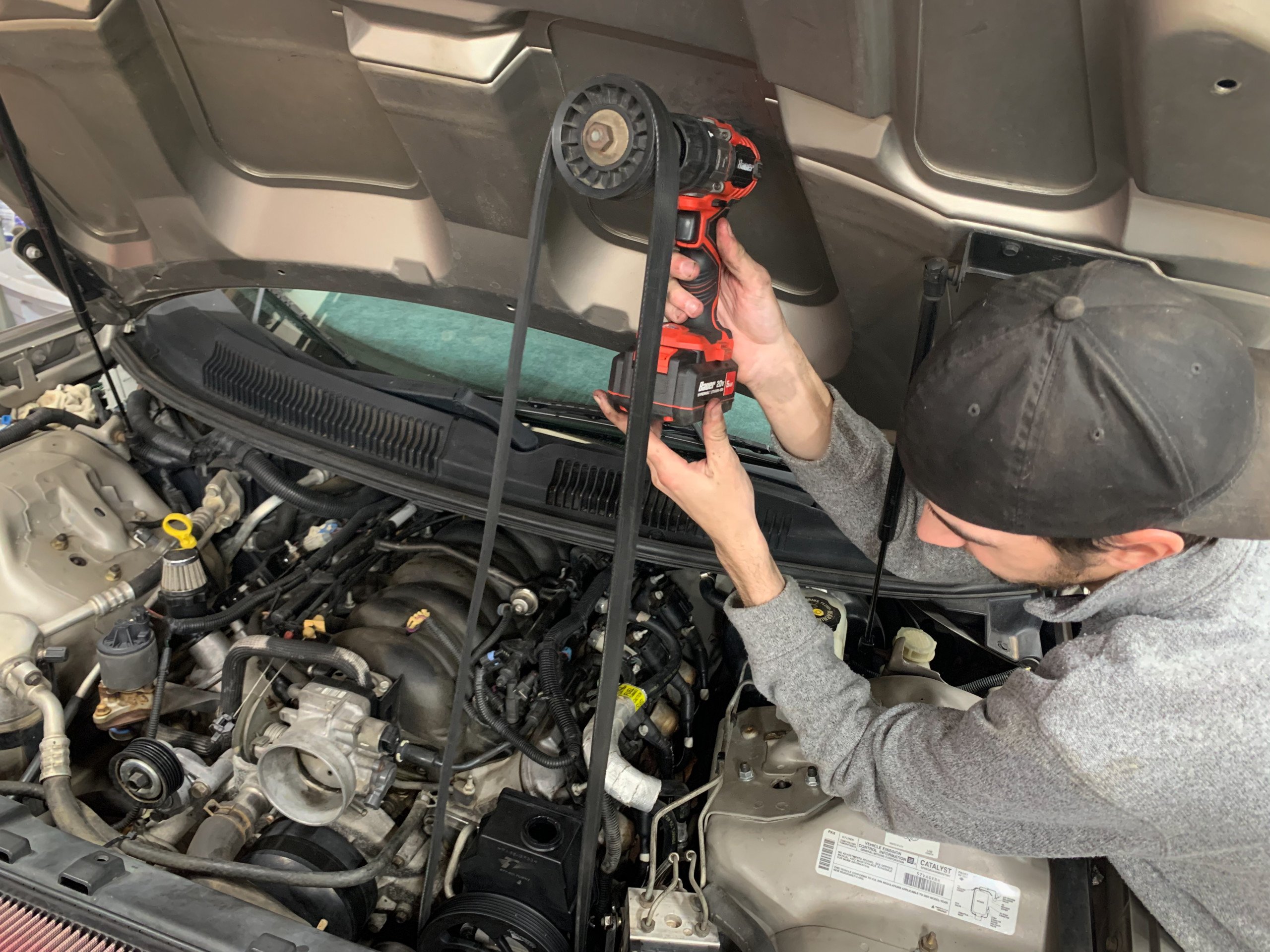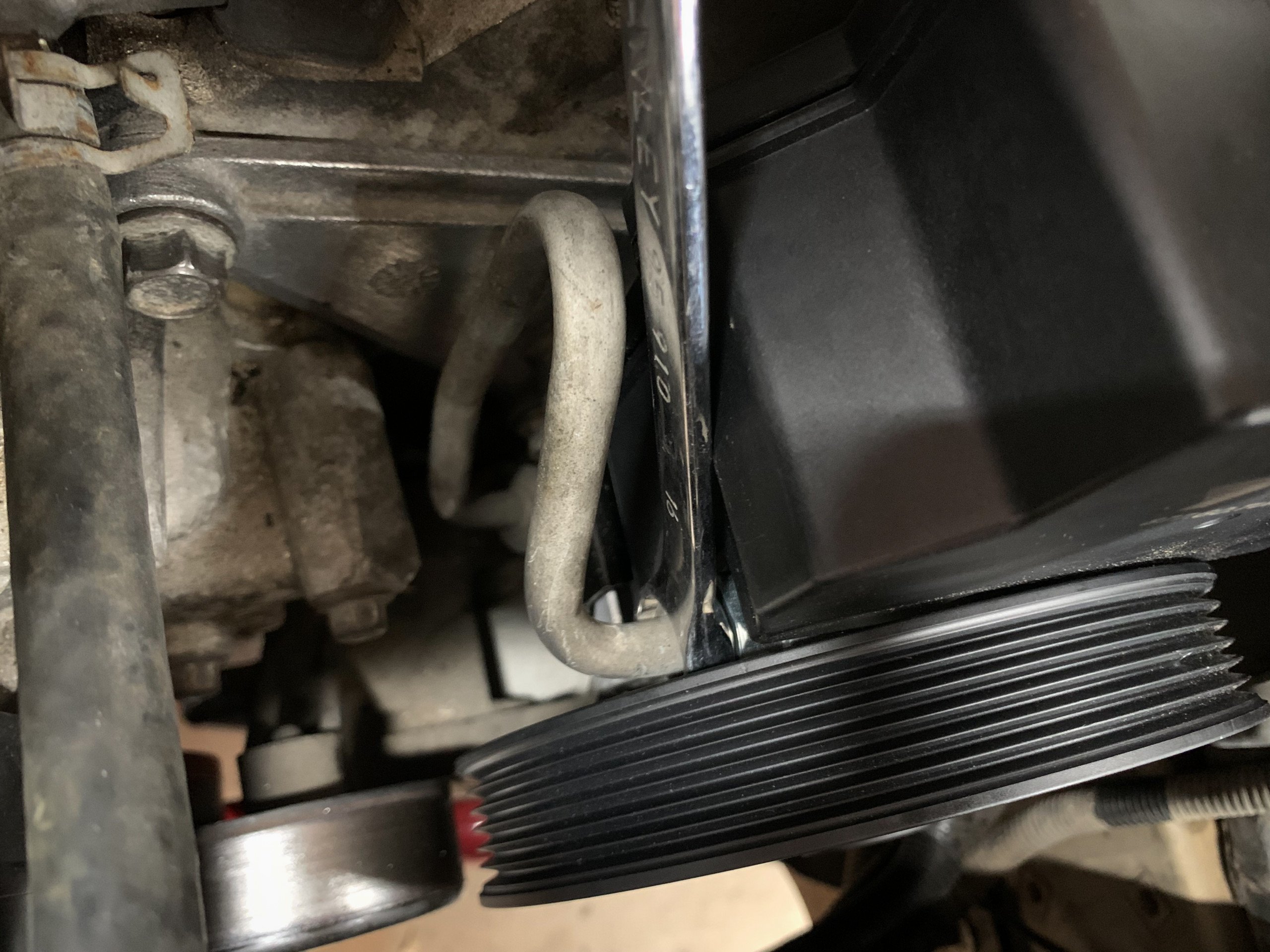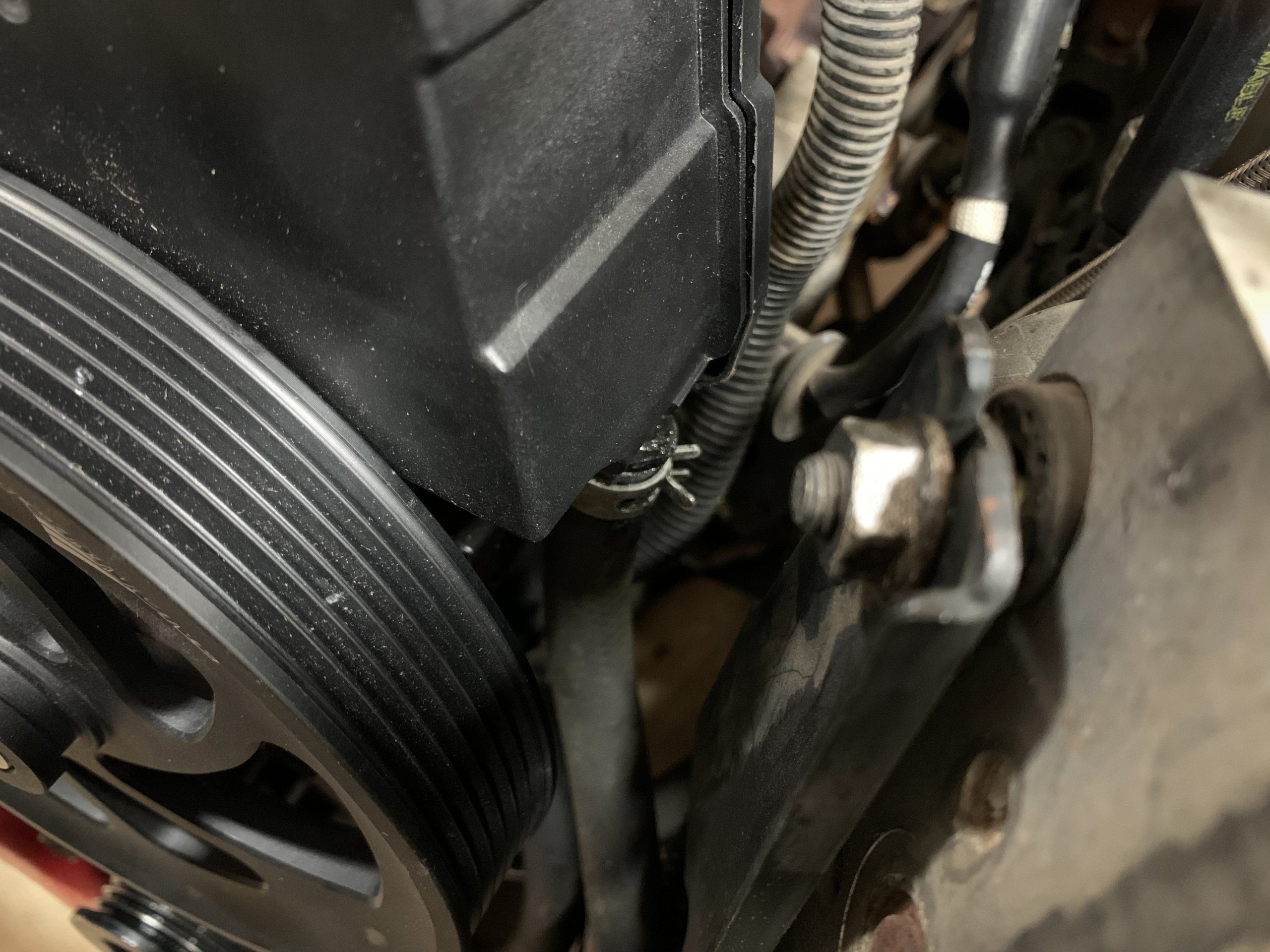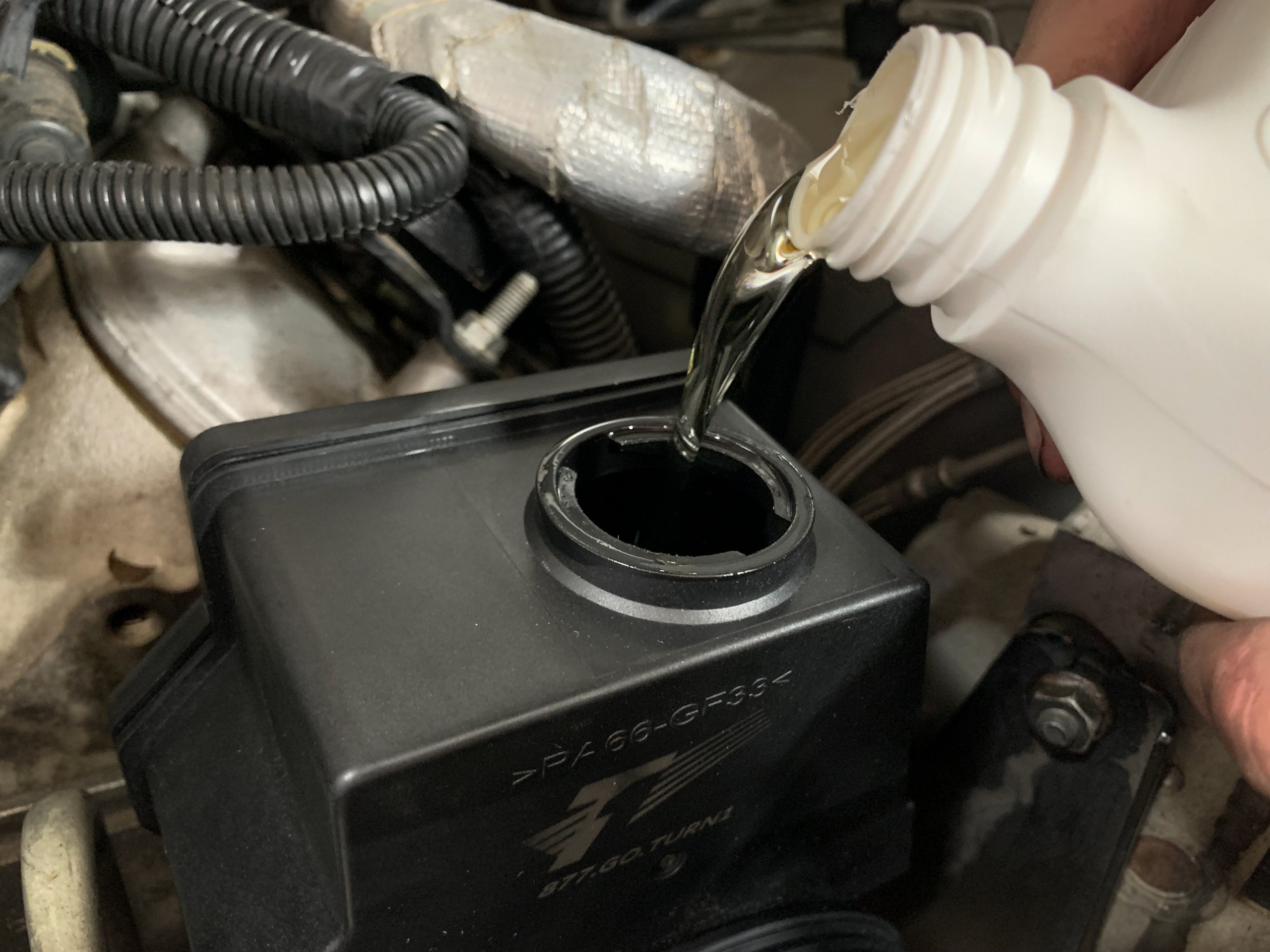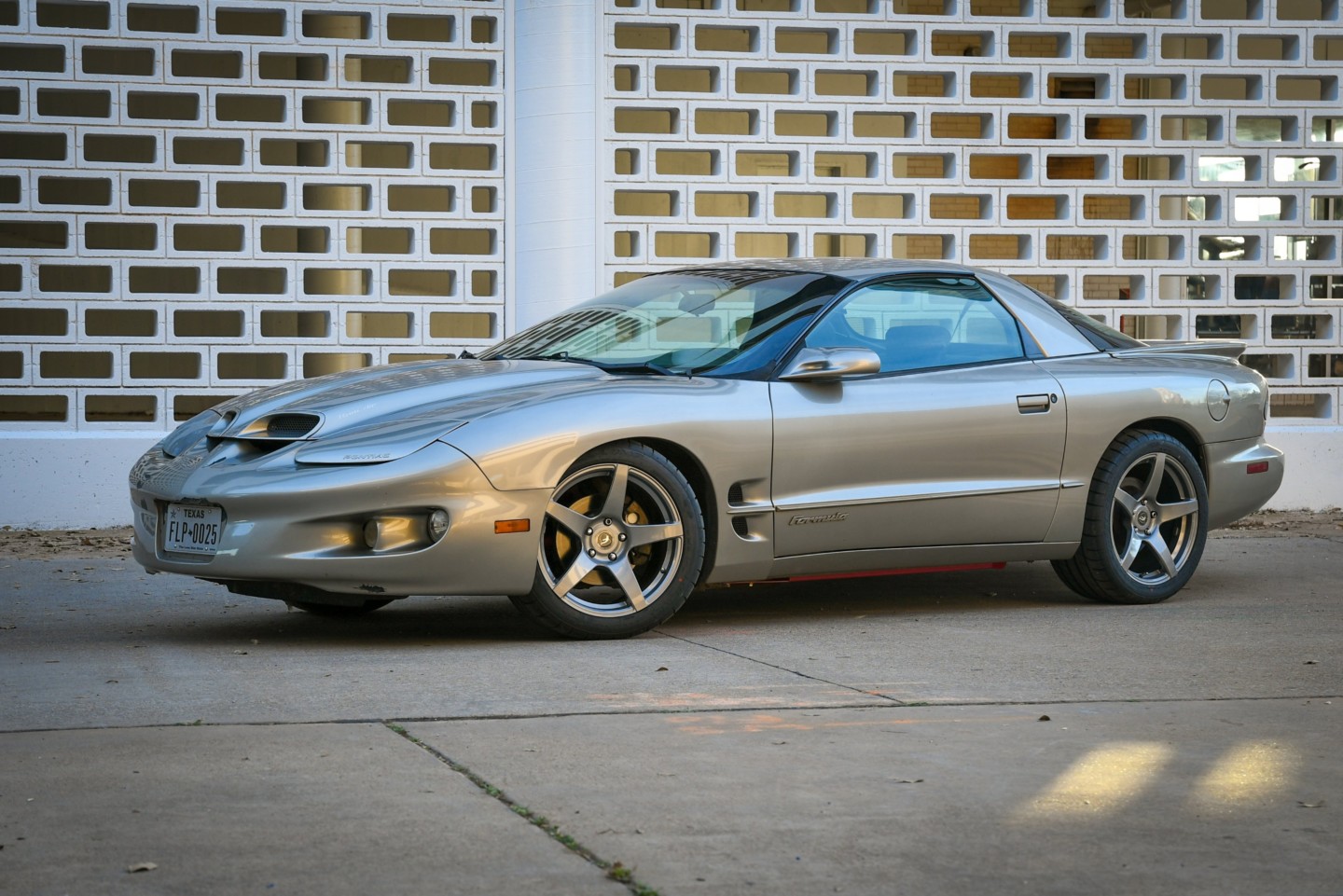Over the years, the F-body platform has proven to be a contender in performance motorsports. These cars are still popular on the streets, at drag races, and autocross events. And while they need upgrades to be competitive like any other vehicle, they have had resounding support from the automotive aftermarket. And some companies, like Turn One, are still investing in this ever-popular platform to produce better products when it comes to spirited street driving or competition. As a result, Turn One offers a couple of options to replace the F-body power steering pump.
Some time ago, we came up with the brilliant idea of driving our 2000 WS6 Firebird Project Dirty Bird from the great state of Texas to Las Vegas, Nevada, for Holley’s LS Fest West. While on this 2,166-mile adventure, two things happened. First, the stock 10-bolt rear axle started to howl as the bearings went out. Then, the original power steering pump also had enough. The OEM pump was extremely unhappy with the much beefier Forgestar 18×10-inch and Mickey Thompson Street Comp 275/40/18 tires up front. Fortunately, we made it home, only to park the ‘Bird for some needed upgrades.
Enter Turn One
After visiting LS Fest and seeing the Optima Ultimate Street Car competitors whipping in and out of the cones all weekend, we couldn’t help but notice the power steering pumps used. And it seems that one name kept coming up: Turn One. While the Dirty Bird is not a full-on autocross machine yet, we were curious to see if the company had something for our application.
F-Body Power Steering Pump
To get more information on the CB- and TC-style pumps, we reached out to Mark Kawiecki, Turn One’s marketing manager.
“CB-style pumps have a few disadvantages in performance cars and engine swap applications. The stock pumps are sensitive to belt tension and tension angle in order for the bushing to lubricate the driveshaft properly. Moving the pump, which is sometimes necessary on aftermarket accessory drive kits, often causes pump issues. Also, higher belt tensions, either from over-tightening the belt, or accessory additions like a serpentine-drive supercharger, can cause similar issues. The worst-case scenario is rapid pump failure,” Kawiecki explains.
Turn One’s change to a bearing-style pump overcomes these setbacks. The LS1 F-body upgrade pump fits on both stock LS1 setups as well as aftermarket accessory drive kits — even those that re-position the pump. In addition to being a more well-rounded pump, the bearing-style pump has an optional driveshaft upgrade for engines that are running a supercharger off the accessory drive belt. This upgrade protects the driveshaft from being separated from the driveshaft bearing under the increased torque that superchargers produce.
As the driveshaft diameters between the two pumps are different, Turn One sells its LS1 F-body upgrade pump as a kit that includes one of its billet aluminum performance pulleys. The pulley looks great, with black anodizing and sleek cutouts, but it is much stronger than the factory composite pulley. In addition, the cutouts provide easy access to the pump’s mounting bolts, making the pump installation much easier, because the pulley can remain on the pump during installation.
HP1 or HP2
The LS1 F-body upgrade pump is available in both the HP1 Series and HP2 Series of pump product lines, with HP1 being a “Stage 1” upgrade over stock, and HP2 being the highest performance line of pumps. Customers have some other options, as well. For example, you can choose a high-pressure fitting: either a stock GM O-ring or an extended AN-6 fitting. The reservoir is OEM, so it uses the same slip-fit design as stock, but Turn One offers an optional adapter fitting to change the return connection to 6AN if desired.
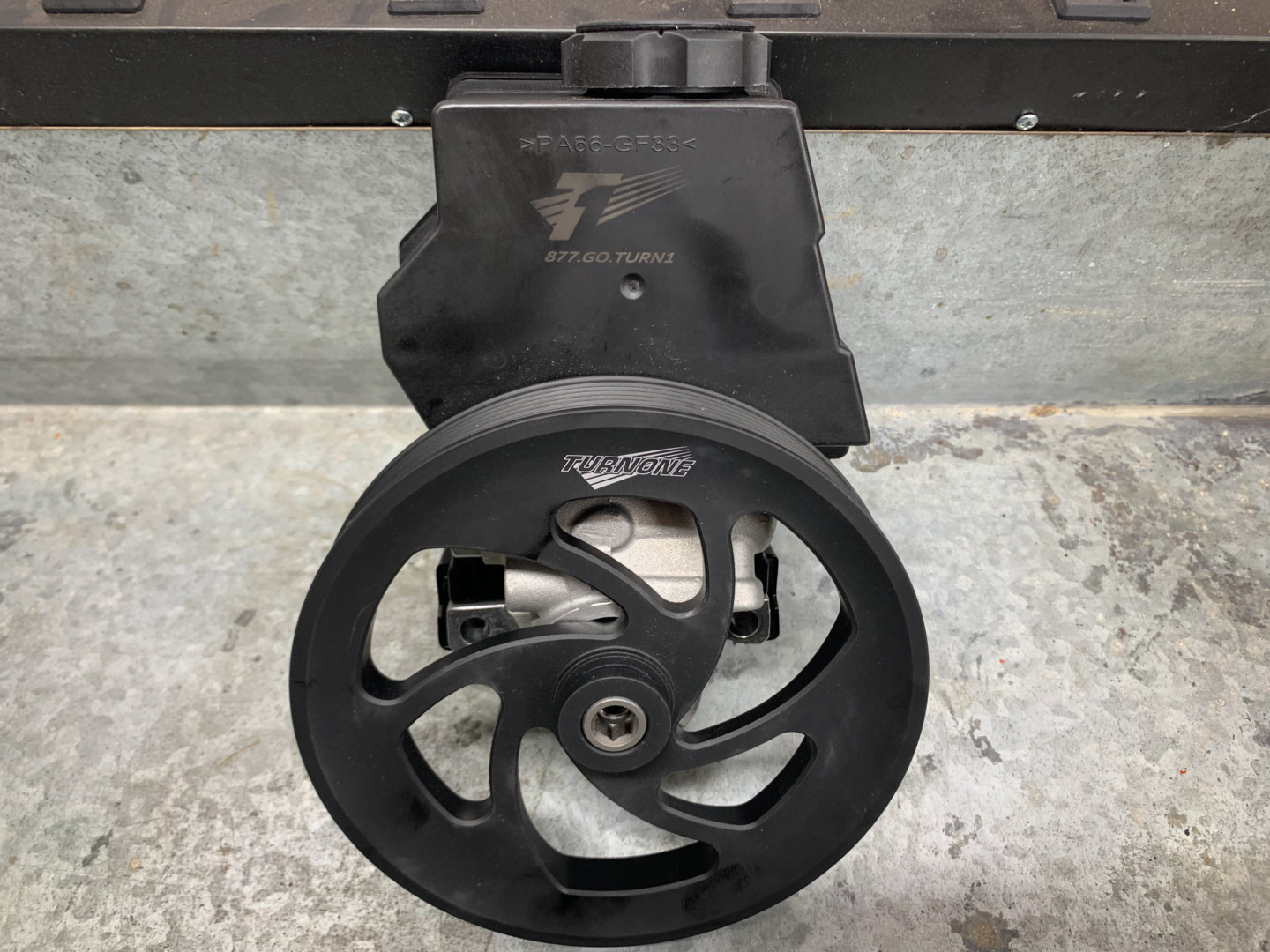
With plans to autocross Project Dirty Bird this year, we opted for the HP2 pump, Turn One’s highest performing offering.
If you’re unsure what pump you need or have some questions, Turn One can help. Kawiecki says, “The customer can fill out our pump form on the website if they are unsure what to order. Once submitted, someone will get back to them on the best pump for their application.” After talking with Kawiecki, we decided to go with Turn One’s HP2 pump for our application. The WS6 is primarily driven on the street, however, we intend to hit the track sooner than later, so it makes sense to upgrade the HP2 right away.
The Installation
With the pump in hand, it was time to remove the old unit so we could hit the streets with confidence once again. However, when we started removing the old power steering pump, we realized we had a problem. The power steering cooler on our WS6 has an issue common to its design. The cooler utilizes the upper radiator hose and coolant to cool off the power steering fluid. It appears that at some point the unit developed a leak. As a result of this failure, the power steering fluid was milky and brown from coolant contamination. We bypassed the factory cooler for now and are waiting for our new one to show up.
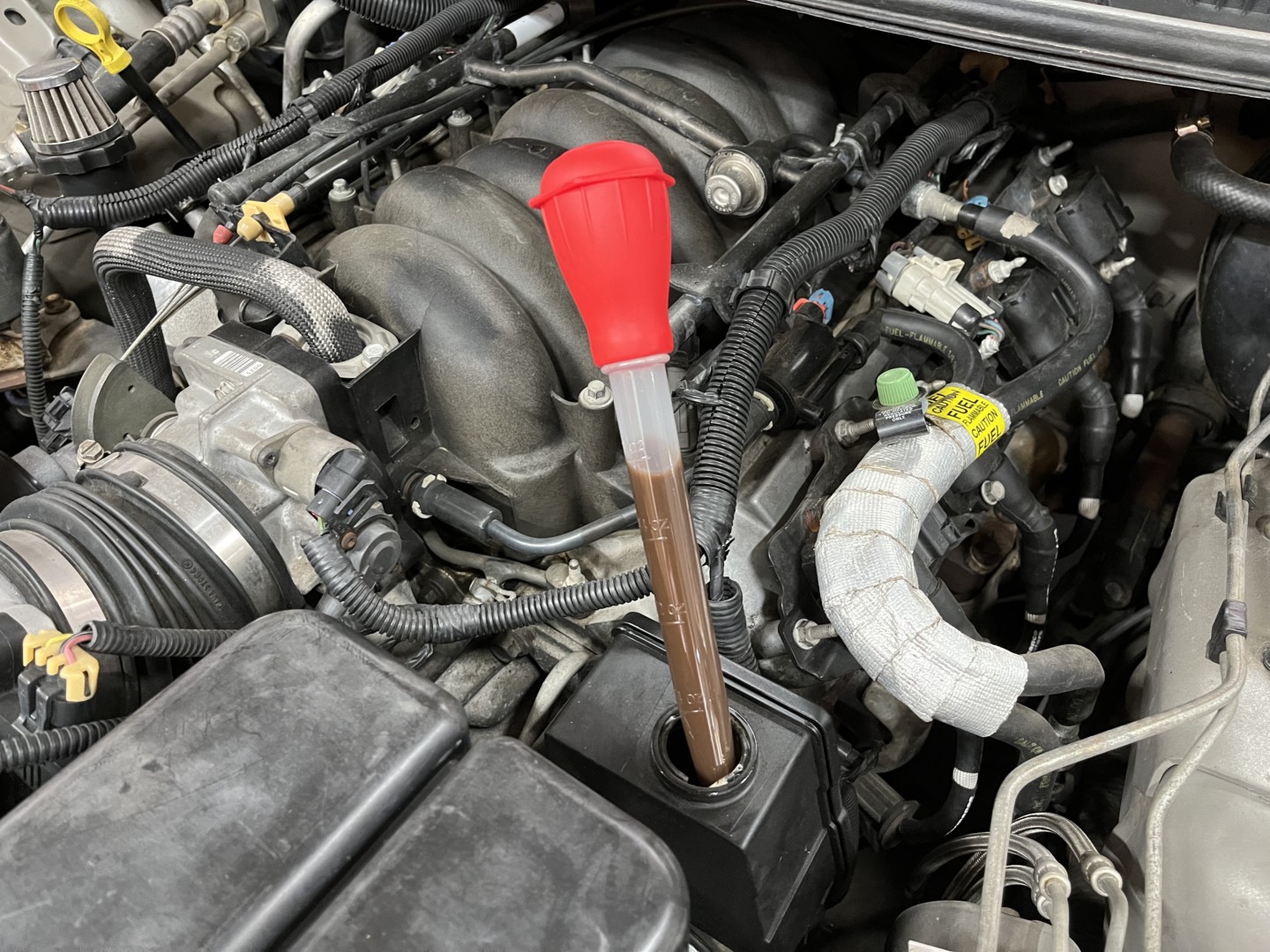
Houston, we have a problem. The factory power steering cooler on our WS6 was seeping coolant into the power steering pump, which produced a milk brown substance.
With as much fluid removed as possible, we resorted to a makeshift “tool” utilizing an old idler pulley, drill motor, and the factory belt. We knew that it was essential to remove the contaminated fluid before installing the new Turn One pump. So, we filled the old pump with fresh fluid and flushed out the old stuff until it was clear. The process took several quarts of steering fluid before we were happy with the results.
Removing the old power steering pump is an easy task, and it can be accomplished by either removing the pulley first to access the bolts, or removing the bracket from the engine before removing the pulley. We chose the latter because I misplaced the puller. We should also note that these OEM composite pulleys are notorious for being brittle after years of use and underhood temperatures. And someone (me) carelessly slung the old pump on the workbench, which sent a crack streaming down the pulley. Fortunately, we will not have to worry about this issue since our new Turn One pump has an aluminum pulley.
Since both power steering pumps were lying side-by-side, we took the chance to weigh them. And honestly, we didn’t think there would be much difference from one pump to the other. However, we were mistaken – Turn One’s pump weighs in at 4 pounds, 13 ounces, while the factory unit hit 6 pounds, 11 ounces, a difference of almost 2 pounds. While that might not seem like much, it can be a lot if you’re trying to put a race car on a diet.
It's hard to imagine saving weight on a power steering pump but Turn One figured out how to accomplish this with its assembly saving almost two pounds.
Finally, it was time to install the new steering pump from Turn One. The process is much easier, thanks to its pulley design. We were able to bolt the bracket up to the head and then attach the pump. Once again, we put our trusty makeshift drill contraption on the pump after filling it. The process allowed us to prime the system without starting the car. Since the fluid level remained consistent, we knew we were safe to fire the car up and check for any leaks and top off the fluid if needed.
We used a makeshift contraption with a drill, idler pulley, and the factory belt to flush the power steering fluid. However, here's a word of advice. A shorter belt will make this process much more manageable.
Test Drive
With the turn of the ignition switch, the WS6 fired up, and we are happy to report the power steering pump whine was gone. As we backed the car out of the driveway, we immediately felt a difference in the steering wheel. The Turn One pump was not having any issue moving the Mickey Thompson Street Comp 275/40/18s from left to right. In fact, it felt effortless. Since upgrading to the Turn One pump, we’ve put several hundred miles on the car, and we only have one regret: why didn’t we do this sooner? Project Dirty Bird is enjoyable once again.


